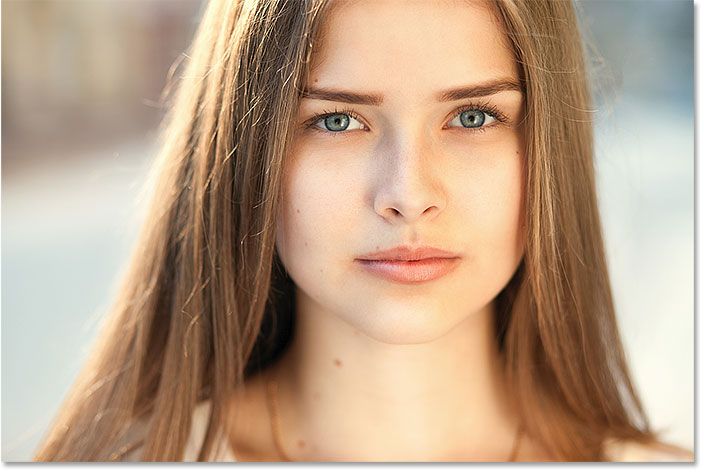Introduction:
The allure of altering eye color in portraits has been a fascination for photographers, digital artists, and enthusiasts alike. In the realm of Adobe Photoshop, the power to transform eye color is at your fingertips, offering a canvas for creativity and personal expression. This comprehensive guide delves into the intricate process of changing eye color with precision in Photoshop, unveiling the steps, techniques, and nuances required to achieve captivating and realistic results.
Section 1: Understanding the Importance of Eye Color
1.1 The Significance of Eye Color:
- Eyes are often considered windows to the soul, and their color plays a crucial role in defining an individual’s appearance. Changing eye color can add drama, emphasis, and a touch of fantasy to portraits, allowing for creative storytelling.
1.2 Ethical Considerations:
- While the artistic freedom to change eye color exists, it’s essential to respect ethical boundaries. When altering eye color in portraits, ensure that the modification aligns with the subject’s comfort and the intended narrative of the image.
Section 2: Preparing Your Image for Eye Color Change
2.1 Selecting the Right Image:
- Begin by choosing a high-resolution image with clear and well-defined eyes. A portrait with good lighting and minimal distractions ensures a smoother process during eye color alteration.
2.2 Duplicating the Layer:
- Duplicate the background layer of your image to create a non-destructive editing environment. This safeguard allows you to preserve the original image and make adjustments on a separate layer.
Section 3: Selecting the Eyes
3.1 Precision with Selection Tools:
- Use selection tools such as the Elliptical Marquee Tool or the Lasso Tool to carefully select the eyes. Pay close attention to details like eyelashes and the contour of the eye to create a precise selection.
3.2 Refining Selection Edges:
- Refine the selection edges using tools like the Refine Edge or Select and Mask. This step ensures that the modified eye color seamlessly integrates with the surrounding areas, avoiding harsh transitions.
Section 4: Adjusting Hue and Saturation
4.1 Accessing Hue/Saturation Adjustment Layer:
- Create a Hue/Saturation adjustment layer specifically for the selected eyes. The adjustment layer allows for non-destructive changes and precise control over the color alteration.
4.2 Modifying Hue for Eye Color:
- Adjust the hue slider in the Hue/Saturation dialog box to experiment with different eye colors. Observe the real-time changes and find the desired hue that complements the overall tone of the image.
Section 5: Enhancing Realism with Layer Blend Modes
5.1 Blending Modes for Realism:
- Experiment with blending modes for the adjustment layer to enhance realism. Soft Light and Overlay are often effective choices, subtly integrating the modified eye color with the underlying details of the eyes.
Section 6: Refining Details and Textures
6.1 Adjusting Saturation and Lightness:
- Fine-tune the saturation and lightness sliders in the Hue/Saturation adjustment layer to achieve the desired vibrancy and luminosity. Balancing these elements contributes to a natural-looking eye color change.
6.2 Integrating Details:
- Zoom in to the eyes and meticulously inspect the modified areas. Use tools like the Brush tool on the adjustment layer mask to refine and integrate details such as reflections, highlights, and subtle variations in color.
Section 7: Emphasizing Realism with Layer Masks
7.1 Applying Layer Masks:
- Incorporate layer masks to precisely control which parts of the eyes are affected by the color change. A layer mask allows you to paint areas of transparency, ensuring that the adjustment only applies where needed.
7.2 Gradual Transitions with Gradients:
- Create a natural transition between the modified and original eye color by using gradients on the layer mask. This technique adds subtlety to the change, avoiding abrupt shifts in color.
Section 8: Adding Depth with Additional Adjustments
8.1 Utilizing Brightness/Contrast:
- Consider using the Brightness/Contrast adjustment layer to further enhance the depth and contrast of the eyes. This adjustment complements the overall eye color change, adding a touch of realism.
8.2 Experimenting with Color Balance:
- Delve into the Color Balance adjustment layer to fine-tune the overall color tones in the eyes. Adjusting highlights, midtones, and shadows allows for a comprehensive control over the color spectrum.
Section 9: Creating Variation with Multiple Layers
9.1 Multiple Adjustments for Realism:
- For a nuanced and realistic effect, create multiple adjustment layers with variations in hue, saturation, and brightness. This approach mimics the natural complexity of eye colors and adds depth to the final result.
9.2 Organizing Layers for Efficiency:
- Keep your layers organized by grouping them and labeling each adjustment layer. This organizational strategy ensures clarity in your workflow, making it easier to revisit and modify specific aspects of the eye color change.
Section 10: Save and Export with Preservation of Layers
10.1 Saving in Photoshop Format: – Save your work in the native Photoshop format (.PSD) to preserve all layers, adjustments, and masks. This format allows for future modifications and refinements without any loss of data.
10.2 Exporting for Specific Purposes: – When satisfied with the eye color change, export the image in the desired format (e.g., JPEG or PNG) for sharing or printing. Maintain a separate copy of the original image to ensure flexibility in your creative process.
Conclusion: Eyes as Canvases of Expression
Changing eye color in Photoshop is not just a technical process; it’s an art form that empowers you to redefine expressions, tell stories, and explore the endless possibilities of visual communication. This comprehensive guide has equipped you with the tools, techniques, and considerations needed to navigate the intricacies of eye color alteration with precision. As you embark on this creative journey, remember that each color change is an opportunity to unveil a new facet of expression, transforming eyes into captivating canvases that speak volumes in the language of art and imagination. Welcome to a world where the gaze becomes a palette for boundless creativity and personal storytelling.
